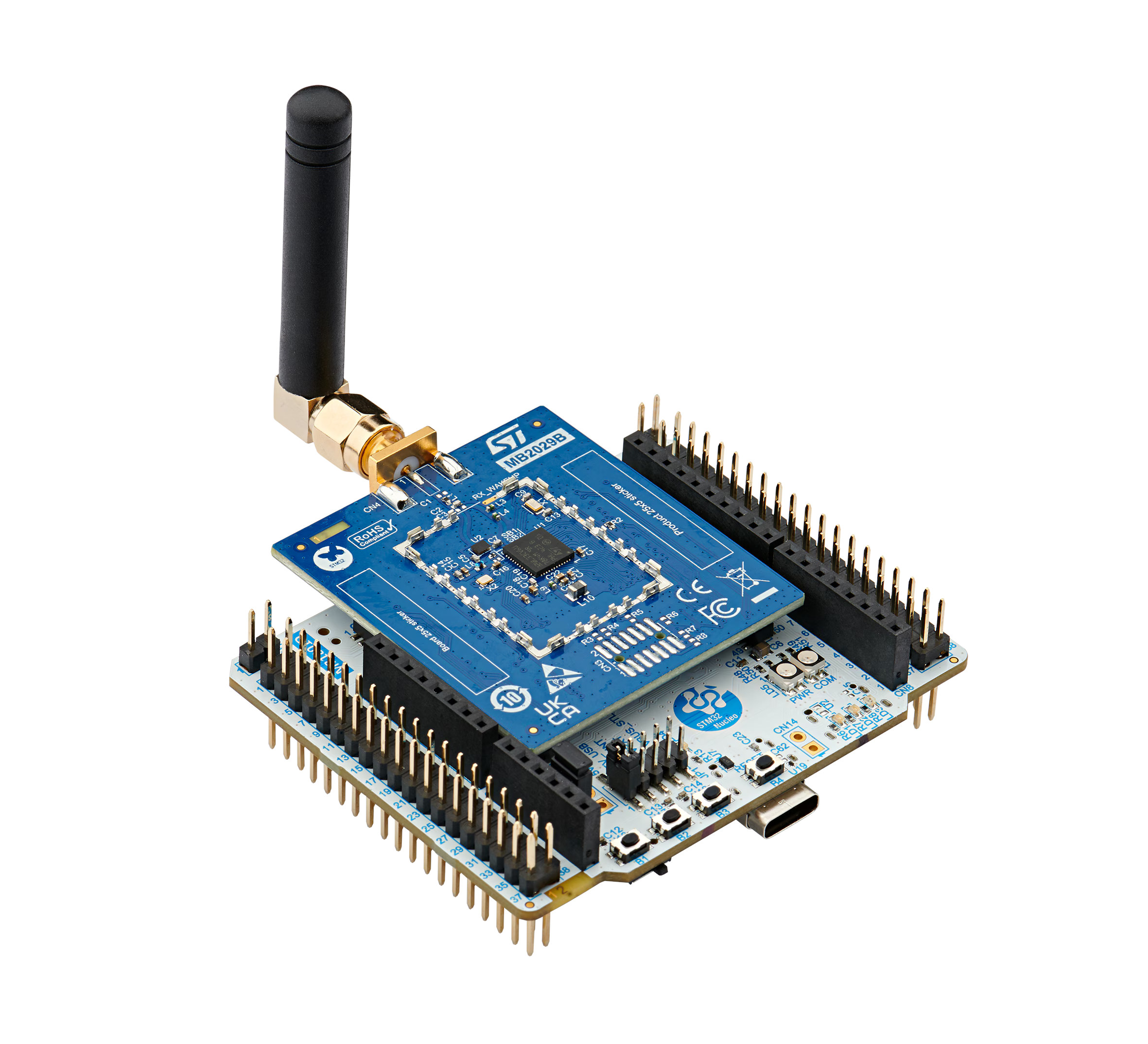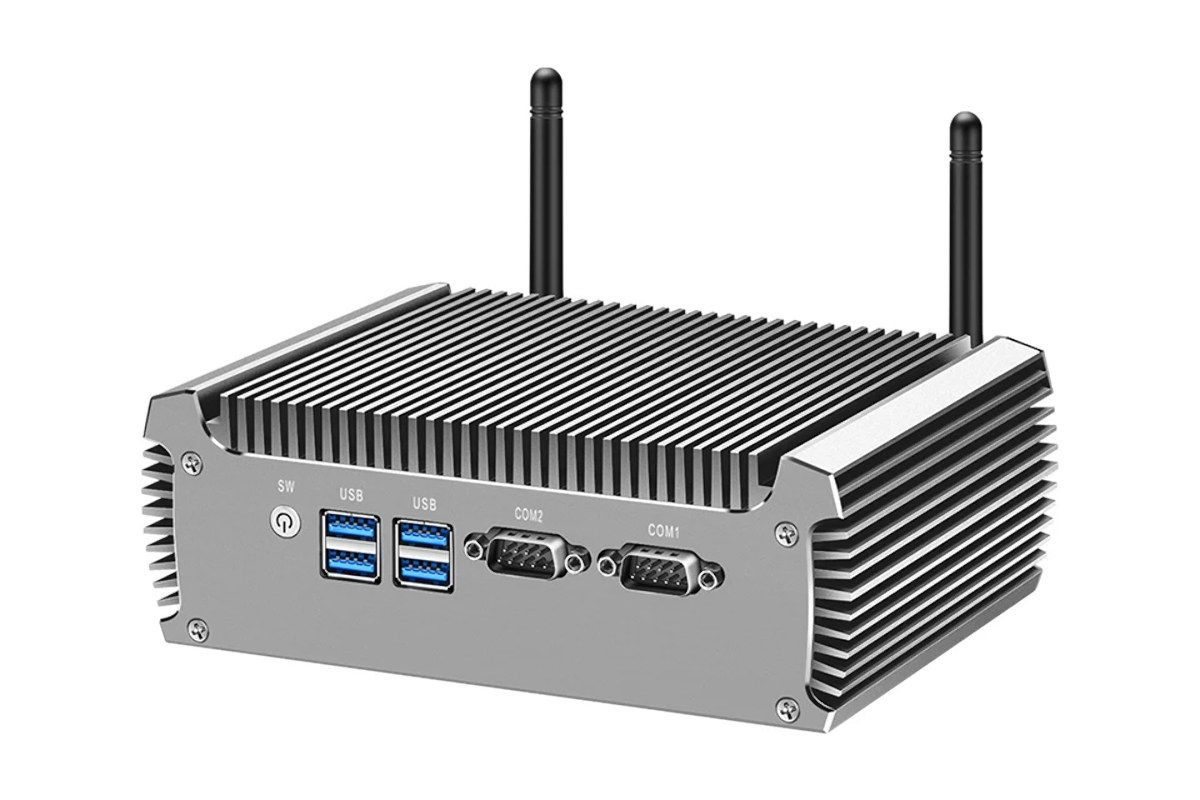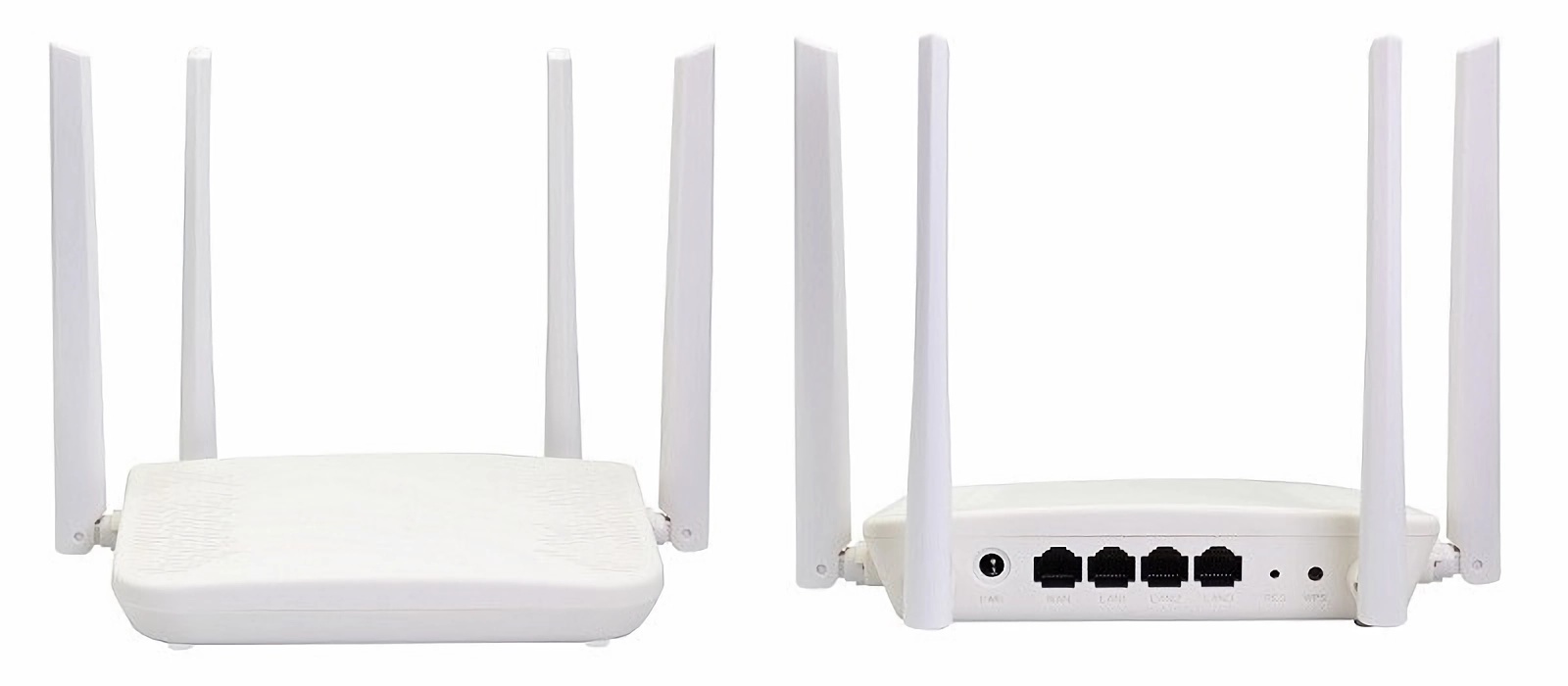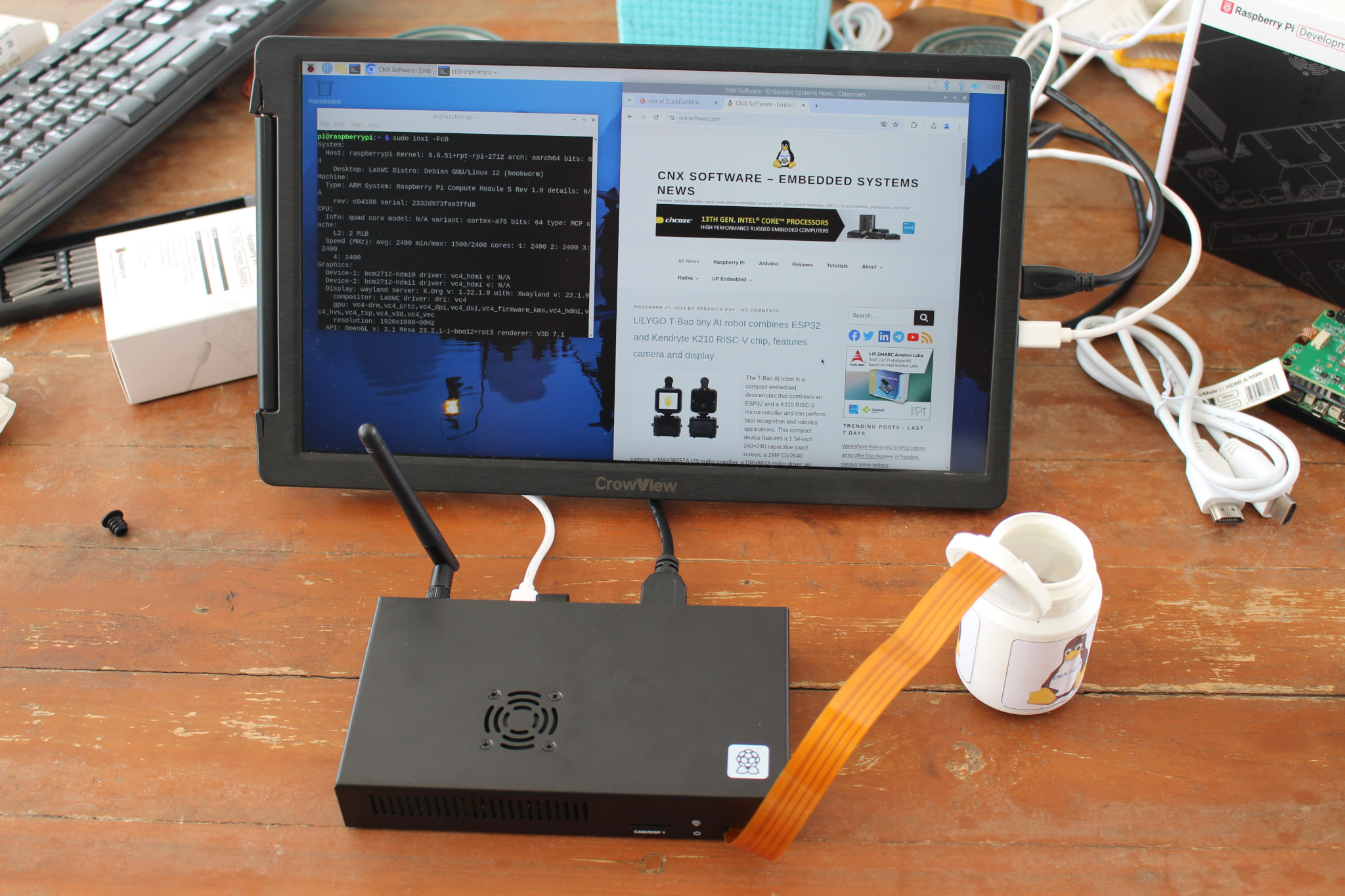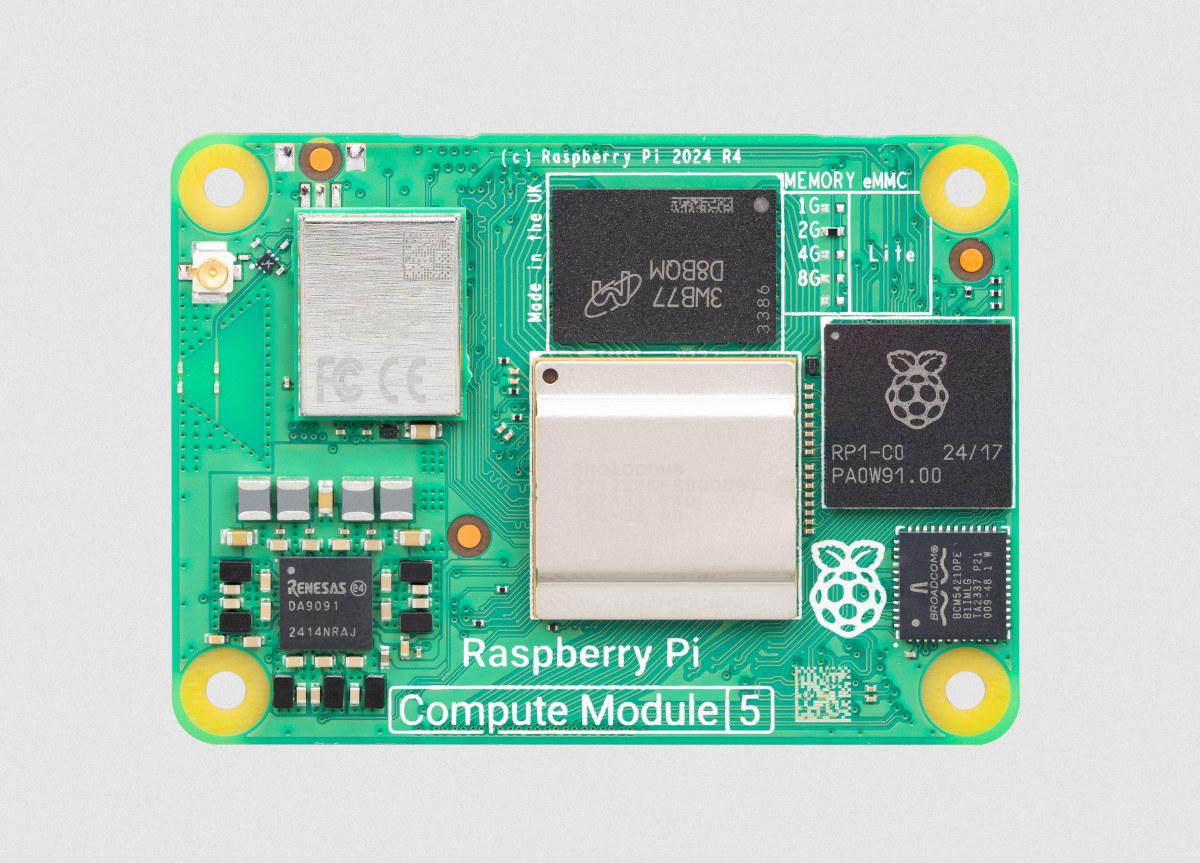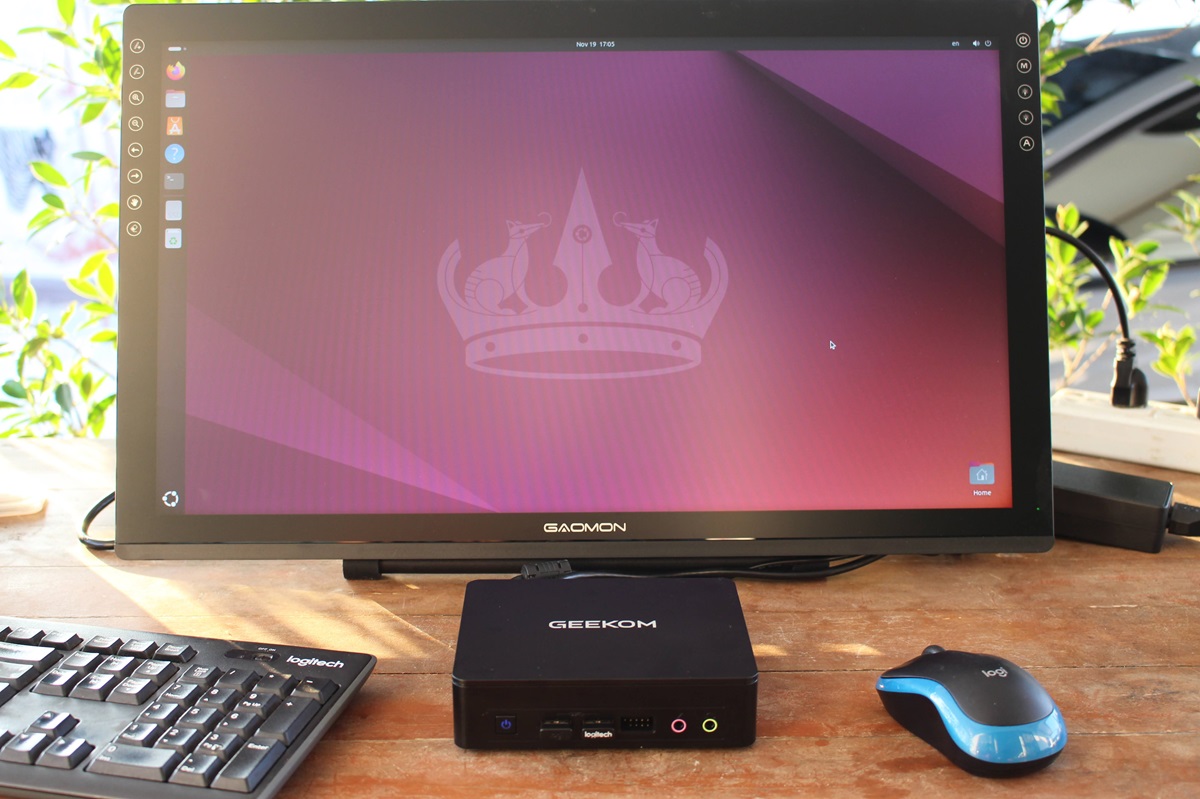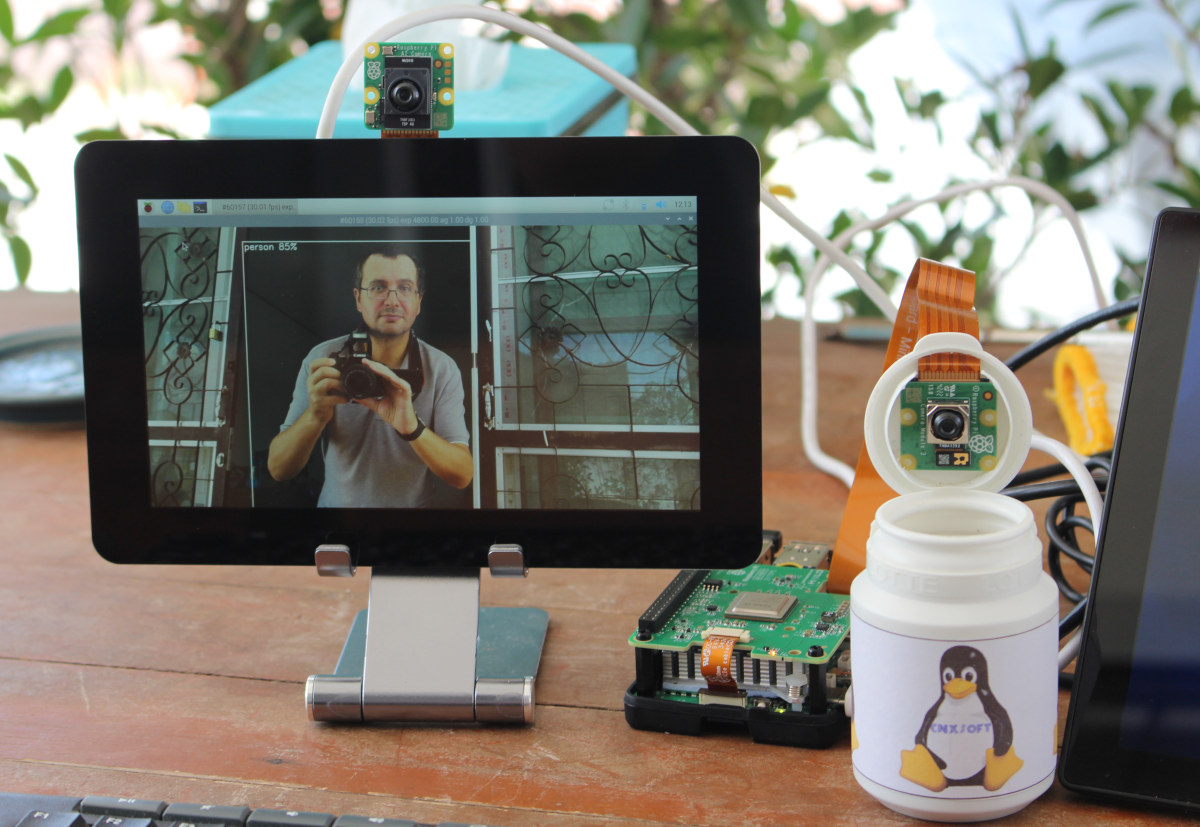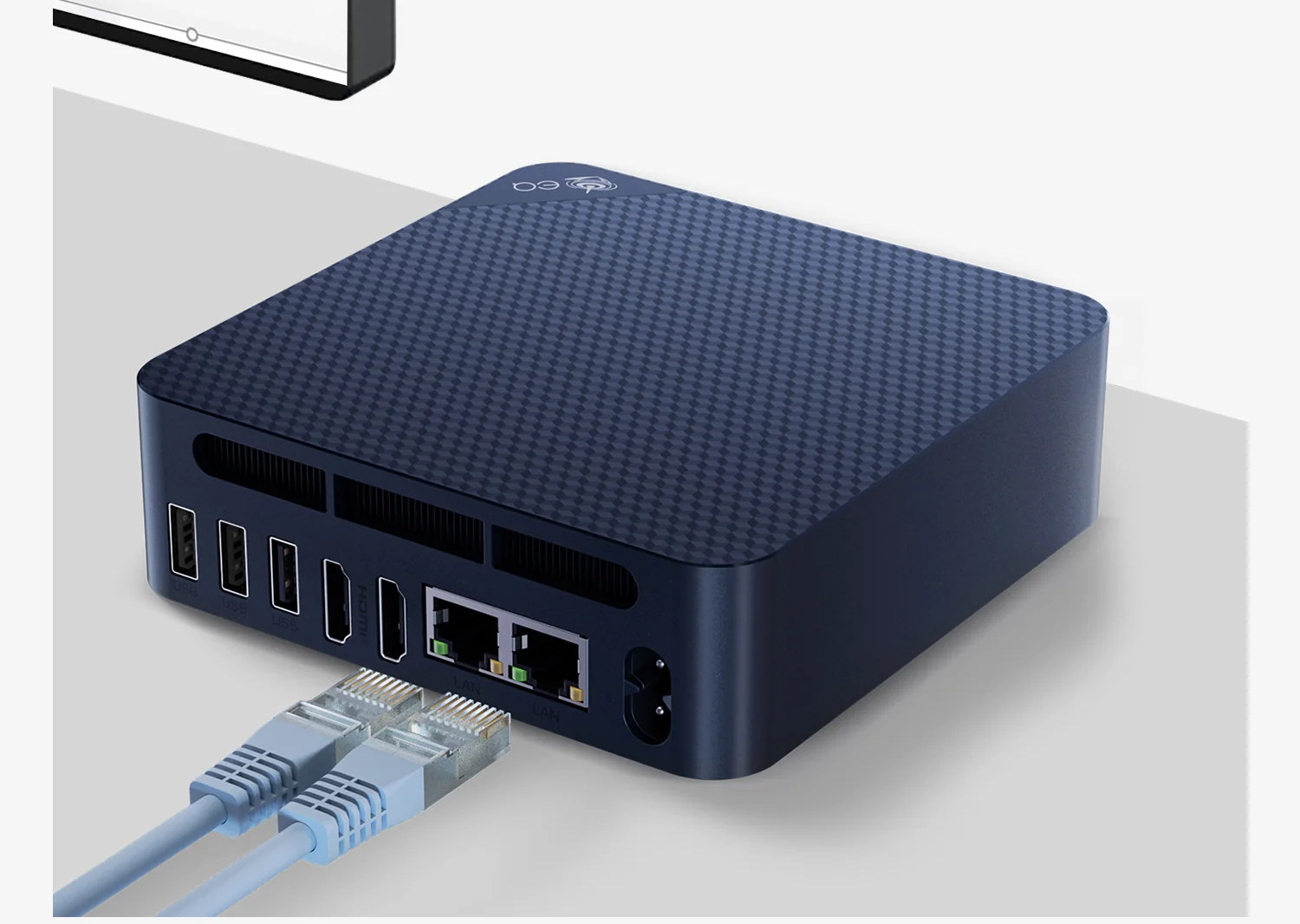STMicro unveiled the STM32WL3 sub-GHz wireless MCU family last year and has now announced the general availability of the STM32WL33 Arm Cortex-M0+ microcontroller, along with two development boards namely the NUCLEO-WL33CC1 and NUCLEO-WL33CC2 for battery-powered smart meters and smart building and industrial monitoring solutions using wireless M-Bus, Sigfox, WiSun, LoWPAN or Mioty LPWAN protocols among others. The NUCLEO-WL33CC1 and NUCLEO-WL33CC2 development boards look the same, but the former supports 826-958 MHz high-band frequencies, while the latter handles 413-479 MHz low-band frequencies. STMicro NUCLEO-WL33CC1/2 specifications: SoC – STMicro STM32WL33CCV6 MCU Core – Arm Cortex-M0+ up to 64 MHz Memory – 32KB SRAM with full retention Storage 256KB flash 1 KB OTP flash (user data) Sub-GHz Wireless 413-479 MHz or 826-958 MHz frequency bands with OOK, ASK, 2(G)FSK, 4(G)FSK, D‑BPSK, and DSSS modulations Compatible with proprietary and standardized wireless protocols such as WM-Bus, Sigfox, Mioty, KNX-RF, and IEEE 802.15.4g Low-power autonomous wake-up […]
Barebone Intel Celeron 2955U or Pentium 3805U fanless industrial mini PC goes for $60 (Promo)
If you’re in need of a low-end, cheap x86 platform you’re in luck since XCY is selling the X46G industrial fanless mini PC powered by an Intel Celeron 2955U Haswell processor or a Pentium 3805U Broadwell CPU for just about $60 as a barebone system, or around $74 with 4GB of RAM, a 64GB SSD, and a WiFi module as part of a Black Friday 2024’s promotion. It’s even cheaper in some other shops, as we’ll see below. Both CPUs have been discontinued since 2021, and nobody should use those in a desktop system unless you are of the very patient type. However, if you want to run some lightweight Windows or Linux application(s), make use of RS232 ports for industrial control, set up a Full HD HTPC, configure a dual GbE server, or need to run FreeDOS or similar x86-only operating systems, those ultra-cheap Intel mini PCs might prove […]
$16 Banana Pi BPI-WiFi5 router is powered by Siflower SF19A28 dual-core MIPS SoC
Banana Pi BPI-WiFi5 is a low-cost WiFi 5 AC1200 router with four gigabit Ethernet ports powered by a 1.2 GHz Siflower SF19A28 dual-core MIPS SoC coupled with 64MB DDR2 and an 8MB flash. It’s not the first low-cost router from the company, as the Banana Pi BPI-WiFi6 Mini was introduced this summer for $30 with Triductor TR6560 SoC, and with the Banana Pi BPI-WiFi5, they’ve now introduced a lower-end WiFi 5 router going for just about $16 plus shipping on AliExpress or $29.99 on Amazon. Banana Pi BPI-WiFi5 specifications: SoC – Siflower SF19A2890S2 dual-core MIPS processor @ 1.2GHz System Memory – 64MB DDR2 RAM Storage – 8MB flash Networking Switch – Airoha AN8855R Gigabit Ethernet switch 1x Gigabit Ethernet WAN port 3x Gigabit Ethernet LAN ports Wireless 2.4 GHz WiFi 2×2 MIMO up to 300 Mbps 5 GHz WiFi 2×2 MIMO up to 866.7 Mbps Frequency bands 2.4GHz – 2.4GHz […]
A first look at the Raspberry Pi Development Kit for CM5
Raspberry Pi has just launched the Compute Module 5 (CM5) and the company sent me a “Raspberry Pi Development Kit for CM5” for review and to play around with the new Broadcom BCM2712 system-on-module succeeding the Raspberry Pi Compute Module 4 (CM4) introduced in 2020. Today, I’ll have a first look at the development kit checking out the hardware, connecting accessories, booting it up to Raspberry Pi OS, and collecting some basic system information. I’ll do a more in-depth review in a few weeks. Unboxing of the Raspberry Pi Development Kit for CM5 I received the kit in a package reading “Raspberry Pi Development Kit” and “For Raspberry Pi CM5”. That’s a good start… The bottom side lists the package’s content which I will check out shortly, and a link to the documentation. Let’s see what we have with the Raspberry Pi Development Kit: a Raspberry Pi IO Case, a […]
Raspberry Pi CM5 launched with Broadcom BCM2712 SoC, up to 16GB LPDDR4 ECC memory
The Raspberry Pi Compute Module 5, or Raspberry Pi CM5 for shorts, is now available with up to 16GB LPPDR4 ECC memory, up to 64GB eMMC flash, and an optional WiFi 5 and Bluetooth 5.0 LE wireless module. It has the same form factor as the Raspberry Pi CM4 and CM4 Lite launched in 2020 but delivers a significant performance boost. The Raspberry Pi CM5 is basically a tiny version of the Raspberry Pi 5 SBC designed for embedded applications with a Broadcom BCM2712 quad-core Cortex-A76 SoC, and offered with 2GB to 16GB RAM, optional 16GB to 64GB eMMC flash, and optional WiFi 5 and Bluetooth 5.0 module. As usual, there are also Raspberry Pi CM5 Lite versions without any eMMC flash meant to be booted from a microSD card or an SSD on the carrier board. Raspberry Pi Compute Module 5 Raspberry Pi CM5 specifications: SoC – Broadcom BCM2712 […]
GEEKOM Mini Air12 Lite Review – Part 3: Ubuntu 24.04 on a low-cost mini PC
We have already checked the hardware of the GEEKOM Mini Air12 Lite mini PC in the first part of the review, before testing the low-cost Intel Processor N100 mini PC with its 8GB RAM and 256GB SATA SSD running Windows 11 Pro in detail in the second part. We’ve now had time to test the GEEKOM Mini Air12 Lite with Ubuntu 24.04 in the third and final part of the review. We’ll test the features in Linux, run some benchmarks, evaluate storage and network performance, play some 4K and 8K videos in YouTube playback, perform a stress test to check its thermal design, and finally measure the mini PC’s fan noise and power consumption. We’ll also compare the results in Linux to the earlier GEEKOM Mini Air12 mini PC with the same CPU, but better specs and a higher price. A challenging Windows 11 / Ubuntu 24.04.1 dual boot installation […]
Getting Started with Raspberry Pi AI HAT+ (26 TOPS) and Raspberry Pi AI camera
Raspberry Pi recently launched several AI products including the Raspberry Pi AI HAT+ for the Pi 5 with 13 TOPS or 26 TOPS of performance and the less powerful Raspberry Pi AI camera suitable for all Raspberry Pi SBC with a MIPI CSI connector. The company sent me samples of the AI HAT+ (26 TOPS) and the AI camera for review, as well as other accessories such as the Raspberry Pi Touch Display 2 and Raspberry Pi Bumper, so I’ll report my experience getting started mostly following the documentation for the AI HAT+ and AI camera. Hardware used for testing In this tutorial/review, I’ll use a Raspberry Pi 5 with the AI HAT+ and a Raspberry Pi Camera Module 3, while I’ll connect the AI camera to a Raspberry Pi 4. I also plan to use one of the boards with the new Touch Display 2. Let’s go through a […]
Beelink EQ14 mini PC features Intel N150 quad-core “Twin Lake” processor, built-in power supply
Last month we noted the Intel Processor N150, Processor N250, and Core i3-N355 Alder Lake-N Refresh CPUs were found in the upcoming ASUS NUC 14 Essential mini PC family, but availability was unclear. The Beelink EQ14 is the first Intel N150 mini PC which can be purchased today on either AliExpress (with EU plug) or Amazon for $182 and up for Black Friday and Cyber Monday 2024. Beelink calls the CPU family “Twin Lake” instead of “Alder Lake-N Refresh”, but we can’t confirm that since the N150 has not been officially launched yet and it’s not listed on Intel Ark. The computer is equipped with 16GB DDR4 memory, a 512GB NVMe SSD, two HDMI ports, two gigabit Ethernet ports, WiFi 6, etc… It also comes with a more unusual feature: a built-in AC power supply, something we previously saw in the Beelink EQ13 with an Intel N200/N100 CPU. Beelink EQ14 […]


